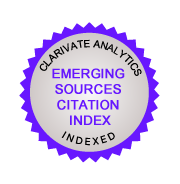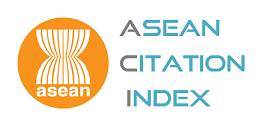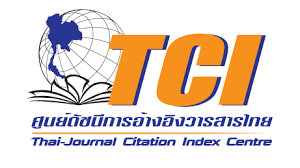Laser ablation behavior and ablation threshold of entropy-controlled perovskite coatings
DOI:
https://doi.org/10.55713/jmmm.v35i4.2451Keywords:
Laser ablation behavior, ablation threshold, high entropy, high reflectivity, low thermal conductivityAbstract
The protection threshold of laser ablation resistant materials lags behind the development of laser power density. Single-functional laser ablation resistant materials can no longer meet the practical needs. High-entropy perovskites with infinite chemical composition, tunable bandgap structure, and efficient thermal management capabilities provide new ideas for developing novel high-reflectivity and low-thermal-conductivity multifunctional laser ablation resistant materials. Herein, leveraging these unique advantages of high-entropy perovskites in optics and thermodynamics, four entropy-controlled perovskite coatings, Ba(Zn1/2Ta1/2)O3 (BZTO), Ba(Zn1/3Ta1/3Nb1/3)O3 (BZTNO), Ba(Zn1/4Ta1/4Nb1/4Ti1/4)O3 (BZTNTO) and Ba(Zn1/5Ta1/5Nb1/5Ti1/5Zr1/5)O3 (BZTNTZO) are designed. Through time-dependent laser ablation experiments, the optical and thermal properties are comprehensively evaluated. And laser ablation behavior and ablation threshold are systematically studied. The BZTNO achieves thermal equilibrium at 1000 W∙cm‒2 and possesses longest ablation thresholds at different energy densities, demonstrates a superior thermal management performance. The optical reflectivity and the thermal expansion coefficient matching with the steel substrate make a major contribution to the excellent laser ablation resistant performance. The ablation thresholds of other entropy-controlled samples increase with entropy. This is attributed to the fact that the increase of cation disorder can effectively reduce the thermal conductivity. The designed entropy-controlled perovskite systems offer wide application prospect in laser ablation.
Downloads
References
C. Wan, P Xia, J. Hua, X. Chen, W. Lang, W. Xue, Y. Geng and T. Fang, “Fabrication of SiC composites by selective laser sintering and reactive melt infiltration,” Ceramics International, vol. 51, no. 11, pp. 14842-14851, 2025. DOI: https://doi.org/10.1016/j.ceramint.2025.01.327
Z. Yong, Y. Wang, G. Yang, Y. Shi, Q. Zhang and J. Yao, “Optimization for furnace-assisted laser cladding process parameter of crack-free ceramic-based coating by response surface methodology,” Ceramics International, vol. 51, no. 9, pp. 11735-11746, 2025. DOI: https://doi.org/10.1016/j.ceramint.2025.01.027
Y. Wang, Q. Peng, G. Wu, J. Yao, Y. Yin, L. Li, Y. Zheng and C. Wen, “Effect of auxiliary laser irradiation on characteristics and properties of micro-arc oxidation coating on Ti6Al4V alloy,” Ceramics International, vol. 50, pp. 19412-19423, 2024. DOI: https://doi.org/10.1016/j.ceramint.2024.03.045
M. Fabey, “USN demonstrates high-energy laser weapon system,” Jane s defence weekly: IHS Jane s defence weekly, vol.1, pp. 59, 2022.
H. Kaushal, and G. Kaddoum, “Applications of lasers for tactical military operations,” IEEE Access, vol. 5, pp. 20736-20753, 2017. DOI: https://doi.org/10.1109/ACCESS.2017.2755678
J. Cook, “High-energy laser weapons since the early 1960s,” Optical Engineering, vol. 52, p. 021007, 2013. DOI: https://doi.org/10.1117/1.OE.52.2.021007
M. Li, L. Gao, Z. Ma, and X. Tian, “Study of highly reflective ceramic glaze coating and laser irradiation effects,” Materials & Design, vol. 233, p. 112279, 2023. DOI: https://doi.org/10.1016/j.matdes.2023.112279
J. Zheng, Z. Li, M. Zhang, L. Gao and T. Zhang, “New type of coatings combining invisibility and high power laser protection function,” Ceramics International, vol. 50 pp. 11442-11450, 2024. DOI: https://doi.org/10.1016/j.ceramint.2024.01.044
Q. Li, N. Zhang, Y. Gao, Y. Qing, Y. Zhu, K. Yang, J. Zhu, H. Wang, Z. Ma, L. Gao, Y. Liu, and J. He, “Effect of the core-shell structure powders on the microstructure and thermal conduction property of YSZ/Cu composite coatings,” Surface & Coatings Technology, vol. 424, p.127658, 2021.
H. Ma, H. Liu, J. Shen, J. Luo, and X. Zhou, “Optical and thermal insulation properties of silica aerogel under a 7 kW⋅cm‒2 power laser irradiation,” Ceramics International, vol. 48, pp. 16584-16598, 2022. DOI: https://doi.org/10.1016/j.ceramint.2022.02.203
C. Ma, Z. Ma, L. Gao, Y. Liu, T. Wu, F. Wang, and H. Ishida, “Ablation behavior of boron-modified phenolic resin irradiated by highenergy continuous-wave laser and its evolution of carbon structure,” Materials & Design, vol. 180, p. 107954, 2019. DOI: https://doi.org/10.1016/j.matdes.2019.107954
F. Xu, S. Zhu, Z. Ma, H. Liu, Y. Chen, and T. Wu, “Effect of TaSi2/ZrSi2 on ablation properties of carbon-phenolic composite irradiated by high-intensity continuous laser,” Ceramics International, vol.46, pp. 28443-28450, 2020. DOI: https://doi.org/10.1016/j.ceramint.2020.08.001
X.-T. Luo, S.-P. Li, G.-C. Li, Y.-C. Xie, H. Zhang, R.-Z. Huang, and C.-J. Li, “Cold spray (CS) deposition of a durable silver coating with high infrared reflectivity for radiation energy saving in the polysilicon CVD reactor,” Surface & Coatings Technology, vol. 409, p. 126841, 2021. DOI: https://doi.org/10.1016/j.surfcoat.2021.126841
S. Son, Y. Liu, D. Chae, and H. Lee, “Cross-linked porous polymeric coating without a metal-reflective layer for sub-ambient radiative cooling,” ACS Applied Materials & Interfaces, vol. 12, no. 52, pp. 57832-57839, 2020. DOI: https://doi.org/10.1021/acsami.0c14792
Y. Zhang, X. Tan, G. Qi, X. Yang, D. Hu, P. Fyffe, and X. Chen, “Effective radiative cooling with ZrO2/PDMS reflective coating,” Solar ,Energy Materials and Solar Cells, vol. 229, p. 111129, 2021. DOI: https://doi.org/10.1016/j.solmat.2021.111129
S. Panda, S. Barik, R. Sahu, A. Sahu, S. Mishra, and S. K. Parida, “Studies of structural, microstructural, dielectric, and electrical characterization of BiNaZnMoO6 double perovskite,” Journal of Metals, Materials and Minerals, vol. 35, no. 2, pp. e2244, 2025. DOI: https://doi.org/10.55713/jmmm.v35i2.2244
S. Nie, L. Wu, Q. Zhang, Y. Huang, Q. Liu, and X. Wang, “High-entropy-perovskite subnanowires for photoelectrocatalytic coupling of methane to acetic acid,” Nature Communications, vol. 15, p. 6669, 2024. DOI: https://doi.org/10.1038/s41467-024-50977-8
L. Su, H. Huyan, A. Sarkar, W. Gao, X. Yan, C. Addiego, R. Kruk, H. Hahn, and X. Pan, “Direct observation of elemental fluctuation and oxygen octahedral distortion-dependent charge distribution in high entropy oxides,” Nature Communications, vol.13, pp. 2358, 2022. DOI: https://doi.org/10.1038/s41467-022-30018-y
P. Zhang, Z. Lou, L. Gong, J. Xu, Q. Chen, M. J. Reece, H. Yan, Z. Dashevsky and F. Gao, “High-entropy MTiO3 perovskite oxides with glass-like thermal conductivity for thermoelectric applications,” Journal of Alloys and Compounds, vol. 937, p.168366, 2023. DOI: https://doi.org/10.1016/j.jallcom.2022.168366
S. Chaowakarnkool, K. Uttarasak, S. Jaipayuk, N. Jantaping, and M. Tuiprae, “The effect of Fe-NiMnMo high entropy alloy electrode on enhancing the weldability and mechanical properties of railway steel 900A,” Journal of Metals, Materials and Minerals, vol. 35, no. 1, pp. e2292, 2025. DOI: https://doi.org/10.55713/jmmm.v35i1.2292
Z. Zhang, L. Chu, J. Zhao, B. Xu, and Q. Ye, “Phase separation promotes FCC-phase mechanical twinning in AlCoCrFeMo0.05Ni2 high entropy alloy,” Journal of Metals, Materials and Minerals, vol. 34(3), pp. 2107, 2024. DOI: https://doi.org/10.55713/jmmm.v34i3.2107
X. Li, Z. Qiang, G. Han, S. Guan, Y. Zhao, S. Lou, and Y. Zhu, “Enhanced redox electrocatalysis in high‑entropy perovskite fluorides by tailoring d-p hybridization,” Nano-Micro Letters, vol.16, p. 55, 2024. DOI: https://doi.org/10.1007/s40820-023-01275-3
M. Mahboub, O. Ali, S. Zeroual, G. Rihia, M. Mimouni, I. Hamadneh, S. Bayou, H. Boulahbel, A. Benarfa, and F. Rehouma, “Influence of Bi substitution on structural and optical properties of LaFeO3 perovskite,” Journal of Metals, Materials and Minerals, vol. 34, no. 4, p. 1837, 2024. DOI: https://doi.org/10.55713/jmmm.v34i4.1837
Z. J. Corey, P. Lu, G. Zhang, Y. Sharma, B. X. Rutherford, S. Dhole, P. Roy, Z. Wang, Y. Wu, H. Wang, A. Chen, and Q. Jia, “Structural and optical properties of high entropy (La, Lu, Y, Gd, Ce)AlO3 perovskite thin films,” Advanced Science, vol. 9, p. 2202671, 2022. DOI: https://doi.org/10.1002/advs.202202671
F. Jia, S. Xu, S. Hu, J. Chen, Y. Wang, Y. Li, W. Ren, and J. Cheng, “Understanding the intrinsic piezoelectric anisotropy of tetragonal ABO3 perovskites through a high-throughput study,” npj Computational Materials, vol. 11, p. 6, 2025. DOI: https://doi.org/10.1038/s41524-024-01496-z
Y. Wang, X. Li, J. Luo, B. F. Woodfield, X. Wang, T. Feng, N. Yin, Q. Shi, G. Li, and L. Li, “An unexpected decrease in vibrational entropy of multicomponent rutile oxides,” Journal of the American Chemical Society, vol.146, pp. 14493-14504, 2024. DOI: https://doi.org/10.1021/jacs.3c14801
Z. Li, S. Wang, M. Zhang, J. Zheng and T. Zhang, “New type of high-power laser protection coatings with both high reflectivity and low thermal conductivity,” Ceramics International, vol. 51, pp. 3176-3184, 2025. DOI: https://doi.org/10.1016/j.ceramint.2024.11.293
H. Zou, Y. Qi, S. Du, Y. Bao, X. Xin, W. Fan, Y. Xiao, S. Jin, Z. Feng, and F. Zhang, “Insight into the rate-determining step in photocatalytic Z-scheme overall water splitting by employing a series of perovskite RTaON2 (R = Pr, Nd, Sm, and Gd) as model photocatalysts,” Journal of the American Chemical Society, vol. 146, no. 41, pp. 28182-28189, 2024. DOI: https://doi.org/10.1021/jacs.4c08001
J. Zhu, Z. Ma, Y. Gao, L. Gao, V. Pervak, L. Wang, C. Wei, and F. Wang, “Ablation behavior of plasma-sprayed La1-xSrxTiO3+δ coating irradiated by high-intensity continuous laser,” ACS Applied Materials & Interfaces, vol. 9, pp. 35444-35452, 2017. DOI: https://doi.org/10.1021/acsami.7b11034
H. Chen, J. Fu, S. Huang, Y. Qiu, E. Zhao, S. Li, J. Huang, P. Dai,
H. Fan, and B. Xiao, “Realization of fine-tuning the lattice thermal conductivity and anharmonicity in layered semiconductors via entropy engineering,” Advanced. Materials, vol. 36, p. 2400911, 2024. DOI: https://doi.org/10.1002/adma.202400911
X. Kong, L. Yang, F. Meng, T. Zhang, H. Zhang, Y. Lin, H. Huang, S. Zhang, J. Guo, and C. Nan, “High-entropy engineered BaTiO3-based ceramic capacitors with greatly enhanced high-temperature energy storage performance,” Nature Communications, vol. 16, pp. 885, 2025. DOI: https://doi.org/10.1038/s41467-025-56195-0
Z. Wen, Z. Tang, Y. Liu, L. Zhuang, H. Yu, and Y. Chu, “Ultra-strong and high thermal insulating porous high-entropy ceramics up to 2000°C,” Advanced Materials, vol. 36, p. 2311870, 2024. DOI: https://doi.org/10.1002/adma.202311870
Y. Liu, P. Tuo, F. Dai, Z. Yu, W. Lai, Q. Ding, P. Yan, J. Gao, Y. Hu, Y. Hu, Y. Fan, and W. Jiang, “A highly deficient medium-entropy perovskite ceramic for electromagnetic interference shielding under harsh environment,” Advanced Materials, vol. 36, p. 2400059, 2024. DOI: https://doi.org/10.1002/adma.202400059
Q. Li, N. Zhang, Y. Gao, Y. Qing, Y. Zhu, K. Yang, J. Zhu, H. Wang, Z. Ma, L. Gao, Y. Liu, and J. He, “Effect of the core-shell structure powders on the microstructure and thermal conduction property of YSZ/Cu composite coatings,” Surface & Coatings Technology, vol. 424, p. 127658, 2021. DOI: https://doi.org/10.1016/j.surfcoat.2021.127658
J. Zheng, K. Wen, Y. Liu, L. Gao, Z. Ma, and X. Diao, “Laser irradiation behavior of plasma-sprayed tantalum oxide coatings,” Ceramics International, vol. 46, pp. 3875-3881, 2020. DOI: https://doi.org/10.1016/j.ceramint.2019.10.113

Downloads
Published
How to Cite
License
Copyright (c) 2025 Journal of Metals, Materials and Minerals

This work is licensed under a Creative Commons Attribution-NonCommercial-NoDerivatives 4.0 International License.
Authors who publish in this journal agree to the following terms:
- Authors retain copyright and grant the journal right of first publication with the work simultaneously licensed under a Creative Commons Attribution License that allows others to share the work with an acknowledgment of the work's authorship and initial publication in this journal.
- Authors are able to enter into separate, additional contractual arrangements for the non-exclusive distribution of the journal's published version of the work (e.g., post it to an institutional repository or publish it in a book), with an acknowledgment of its initial publication in this journal.












